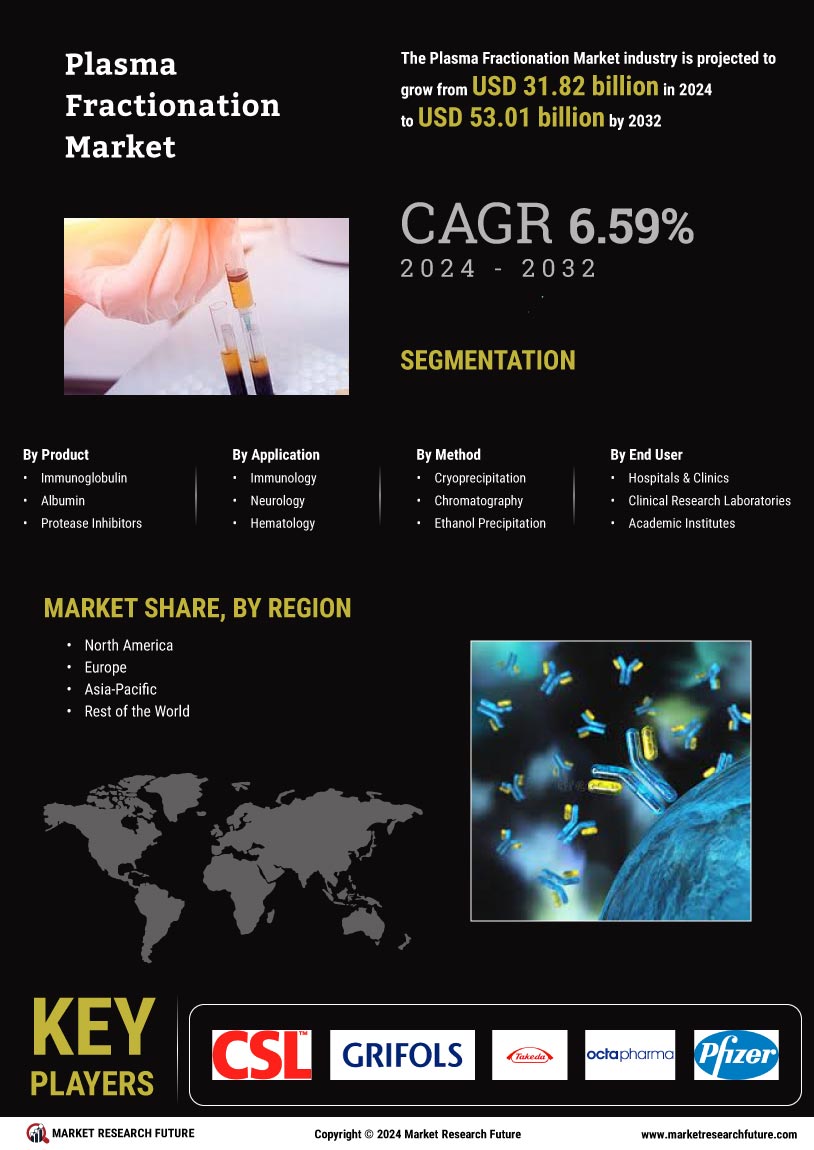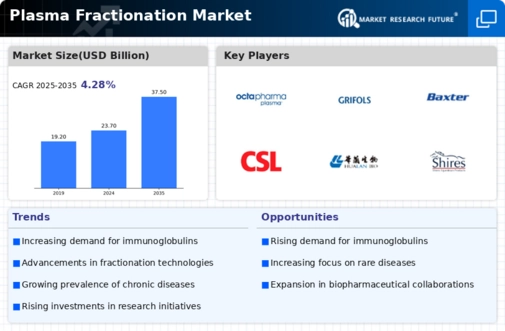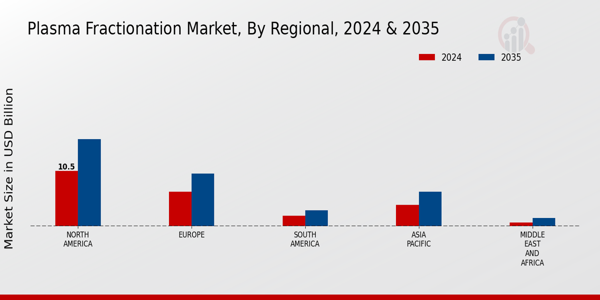Market Growth Projections
The Global Plasma Fractionation Market Industry is projected to experience substantial growth over the coming years. With a market value anticipated to reach 23.7 USD Billion in 2024, the industry is poised for expansion, driven by various factors such as increasing demand for immunoglobulins and advancements in processing technologies. By 2035, the market could potentially grow to 37.5 USD Billion, reflecting a compound annual growth rate of 4.28% from 2025 to 2035. This growth trajectory indicates a robust future for plasma fractionation, as the industry adapts to evolving healthcare needs and technological advancements.
Rising Demand for Immunoglobulins
The Global Plasma Fractionation Market Industry experiences a notable increase in demand for immunoglobulins, which are essential for treating various immunodeficiency disorders. This demand is driven by a growing awareness of autoimmune diseases and the need for effective therapies. In 2024, the market is projected to reach 23.7 USD Billion, reflecting the increasing reliance on plasma-derived therapies. The rising prevalence of conditions such as primary immunodeficiency and chronic inflammatory diseases further fuels this trend. As healthcare systems globally prioritize patient-centered care, the focus on immunoglobulin therapies is expected to continue, contributing to the overall growth of the Global Plasma Fractionation Market Industry.
Regulatory Support and Quality Standards
Regulatory frameworks and quality standards play a pivotal role in shaping the Global Plasma Fractionation Market Industry. Governments and health organizations worldwide are establishing stringent regulations to ensure the safety and efficacy of plasma-derived products. This regulatory support fosters consumer confidence and encourages investment in plasma fractionation technologies. Compliance with these standards is essential for manufacturers aiming to enter or expand within the market. As the industry adapts to evolving regulations, it is likely to witness sustained growth, with projections indicating a market value of 23.7 USD Billion in 2024. The emphasis on quality assurance and regulatory compliance is crucial for the continued success of the Global Plasma Fractionation Market Industry.
Advancements in Plasma Processing Technologies
Technological innovations in plasma processing are significantly influencing the Global Plasma Fractionation Market Industry. Enhanced methods such as chromatography and filtration techniques improve the efficiency and yield of plasma-derived products. These advancements not only optimize production processes but also ensure higher purity and safety of the final products. For instance, the introduction of automated systems in plasma fractionation facilities has streamlined operations, reducing costs and increasing output. As a result, the market is likely to expand, with projections indicating a growth trajectory that could see it reach 37.5 USD Billion by 2035. This technological evolution is essential for meeting the rising global demand for plasma-derived therapies.
Growing Investment in Healthcare Infrastructure
Investment in healthcare infrastructure is a crucial driver for the Global Plasma Fractionation Market Industry. Governments and private entities are increasingly allocating resources to enhance healthcare facilities and services, particularly in developing regions. This investment facilitates the establishment of advanced plasma fractionation centers, which are essential for producing high-quality plasma-derived products. Improved infrastructure not only supports the production of immunoglobulins and clotting factors but also enhances access to these therapies for patients. As a result, the market is poised for growth, with the potential to reach 37.5 USD Billion by 2035. The focus on strengthening healthcare systems globally is likely to have a lasting impact on the Global Plasma Fractionation Market Industry.
Increasing Prevalence of Hemophilia and Other Bleeding Disorders
The Global Plasma Fractionation Market Industry is significantly impacted by the rising incidence of hemophilia and other bleeding disorders. These conditions necessitate the use of clotting factor concentrates, which are derived from plasma. The increasing awareness and diagnosis of these disorders contribute to a higher demand for plasma-derived therapies. As healthcare providers focus on improving patient outcomes, the need for effective treatment options becomes paramount. This trend is expected to drive market growth, with a compound annual growth rate of 4.28% projected from 2025 to 2035. The emphasis on specialized treatments for bleeding disorders underscores the importance of the Global Plasma Fractionation Market Industry.



















Leave a Comment